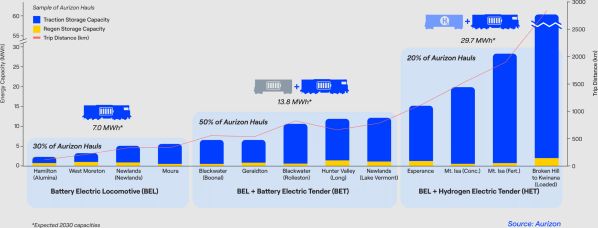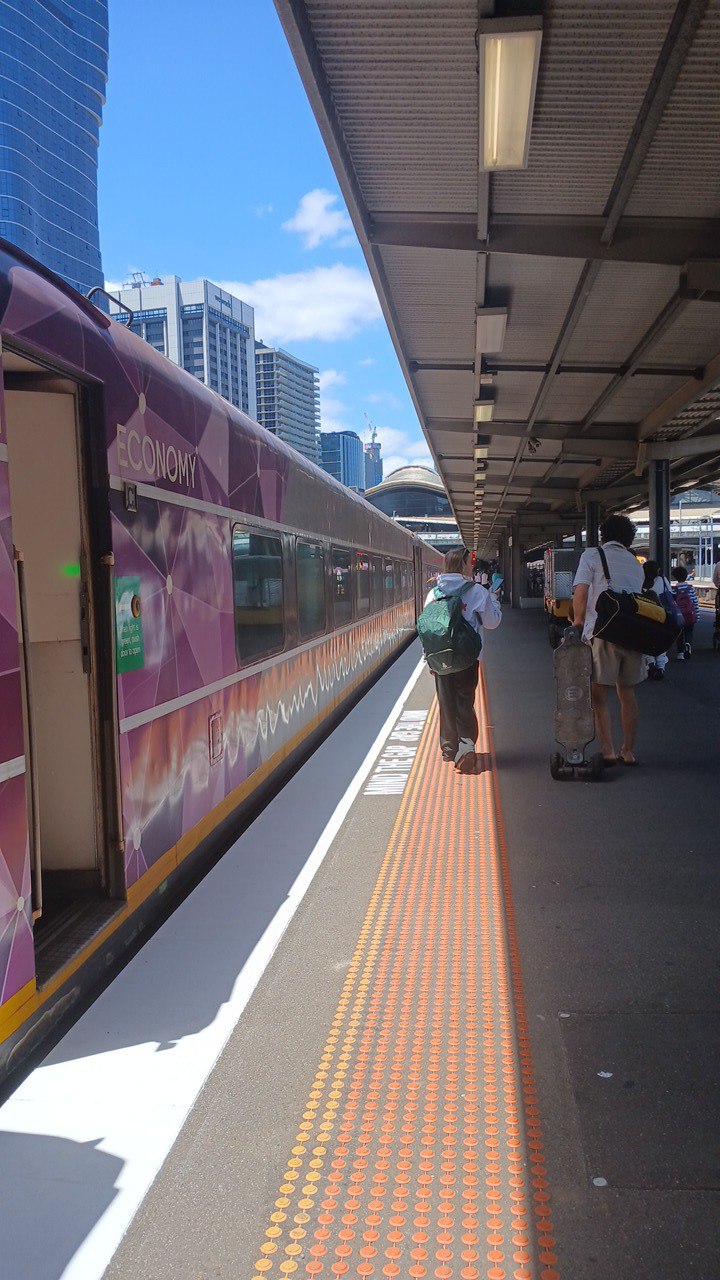AUSTRALIA’s largest rail freight operator, Aurizon, will develop and trial a 1.8MWh battery-electric tender (BET) to power a standard diesel-electric locomotive in a hybrid diesel-battery configuration.
Project partner Alta Battery Technology will design and build the prototype BET, utilising the company’s dc-to-dc converter to supply current to the locomotive’s traction motors. The federal government’s Australian Renewable Energy Agency (Arena) will contribute $A 9.4m ($US 6.2m) towards the $A 18.8m cost of the project.
The tender will use a liquid-cooled, lithium iron phosphate (LFP) battery and will be able to operate in three modes that the driver is able to select: electric, diesel and hybrid. The battery will be housed in a separate 40-foot container which will sit on a wagon behind the locomotive.
Work on the prototype is expected to be completed in December 2025 ahead of the start of trials on an existing Aurizon route in early 2026. The trial’s key purpose is to measure the effectiveness of the regenerative energy capture. Aurizon says the unit should be able to complete the full trip in electric mode, including capturing and reusing energy from regenerative braking.
Alta says its dc-to-dc converter is designed specifically for high-voltage systems and removes the need to prematurely replace high-value diesel assets with fully electric systems to meet carbon-neutral and net-zero targets. In diesel-only mode, Aurizon says, it will be able to operate the locomotive with or without the tender.
In hybrid mode the tender will capture the regenerative braking energy and feed it back into the BET to reduce diesel consumption. Establishing the efficiency of this hybrid mode of operation is the secondary purpose of the trial.
Aurizon says the amount of CO2 savings will depend on the route profile, the size of the tender and the size of the battery. Aurizon’s long-haul trains operate trips of up to 850km and the operator believes up to 17% regeneration is possible, extending the range of the diesel locomotive.
Alta says using regenerative braking in such a way has the potential to prompt a power transition from diesel to electric traction when the BET is coupled to a modified diesel-electric locomotive. In addition, when coupled with future battery-electric locomotives, the BET could potentially support operation on up to 50% of Aurizon’s commercial rail freight routes.
Zero-emission strategy
The project is the second of Aurizon’s three-pronged strategy to develop a zero-emission fleet.
Aurizon started work on the first part, Australia’s first battery-electric locomotive (BEL) in May 2023. The prototype is expected to start line trials on routes of up to 400km in late 2025.
The third part of the strategy involves Aurizon working with Anglo American on a feasibility study to introduce hydrogen-powered traction for bulk freight. The study concluded that a hydrogen-electric Tender was the preferred configuration given the lack of space on the locomotive to store the required amount of hydrogen fuel. Aurizon continues to explore this concept, which when coupled with a battery-electric locomotive, could support trips of 850km and above.
Aurizon operates a fleet of over 600 diesel locomotives and carries 250 million tonnes of freight a year across Australia.
The post Aurizon to test battery tender for diesel locomotives appeared first on International Railway Journal.

